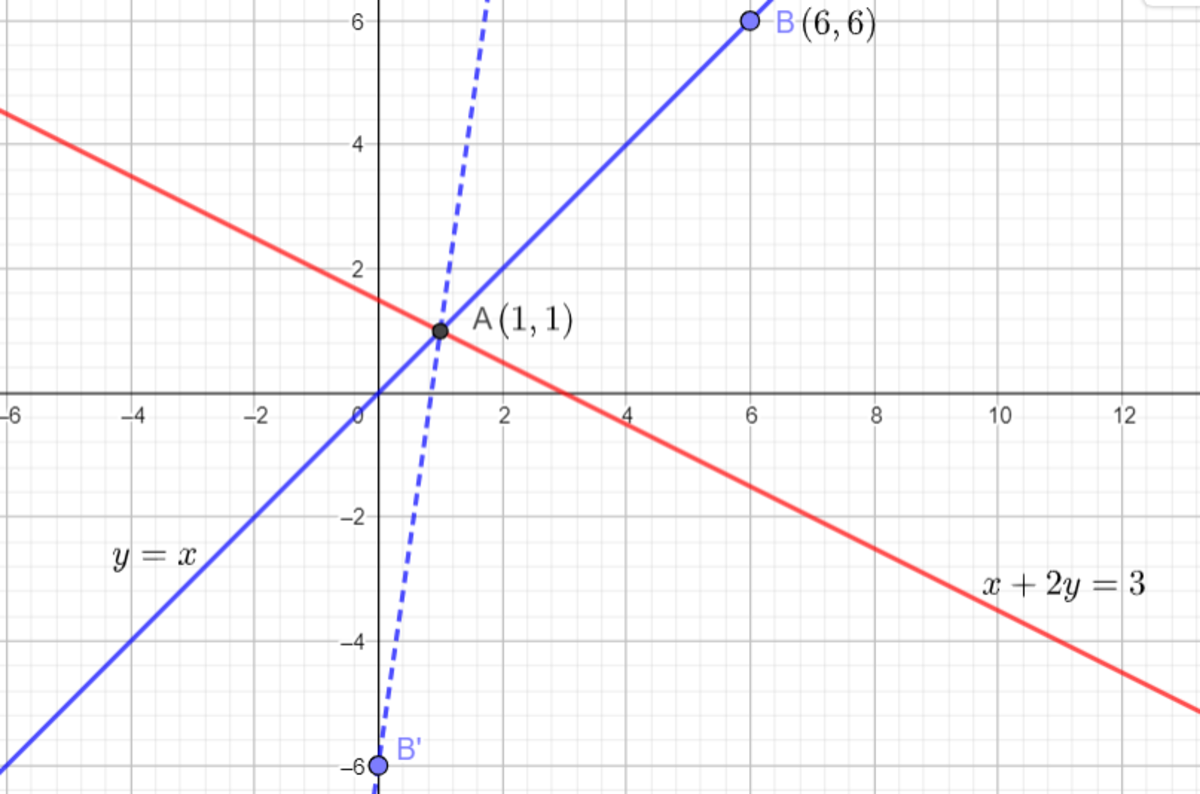Easier than snot
If the reflection of the line y = x over the line x + 2 y = 3 is the line y = a x − b , submit your answer as a − b .
The answer is 1.
This section requires Javascript.
You are seeing this because something didn't load right. We suggest you, (a) try
refreshing the page, (b) enabling javascript if it is disabled on your browser and,
finally, (c)
loading the
non-javascript version of this page
. We're sorry about the hassle.
2 solutions
You found the solution I built into this problem that makes it easier than snot. Good job.
When line l 1 , y = x is reflected over line l 2 , x + 2 y = 3 , every point that lies on l 1 is reflected over l 2 . So the point of intersection of l 1 and l 2 will also lie on the reflected line, y = a x − b .
Solving the pair of equations, { y = x x + 2 y = 3 gives us the intersection point, ( 1 , 1 ) . As stated earlier, the point ( 1 , 1 ) satisfies the equation of the line y = a x − b .
Therefore, 1 = 1 ⋅ a − b ⟹ a − b = 1
 Note:
A more general approach would be to find two points on the reflected line, since two points define a unique line. We pick a point, say
B
(
6
,
6
)
, and reflect it over
l
2
. As shown
here
, the reflected point is
B
′
(
0
,
−
6
)
. Since we know that the two points
A
(
1
,
1
)
and
B
′
(
0
,
−
6
)
lie on the reflected line, using the point-point form of a line, the required equation is,
y
−
1
=
1
−
0
1
−
(
−
6
)
(
x
−
1
)
⟹
y
=
7
x
−
6
Note:
A more general approach would be to find two points on the reflected line, since two points define a unique line. We pick a point, say
B
(
6
,
6
)
, and reflect it over
l
2
. As shown
here
, the reflected point is
B
′
(
0
,
−
6
)
. Since we know that the two points
A
(
1
,
1
)
and
B
′
(
0
,
−
6
)
lie on the reflected line, using the point-point form of a line, the required equation is,
y
−
1
=
1
−
0
1
−
(
−
6
)
(
x
−
1
)
⟹
y
=
7
x
−
6
You found the easy shortcut solution. Good job. Try this problem next if you dare https://brilliant.org/problems/reflecting-the-directrix-over-the-parabola/
As line y = x intersects line x + 2 y = 3 at P ( 1 , 1 ) , line y = a x − b must go through P too, so 1 = a × 1 − b ⟹ a − b = 1